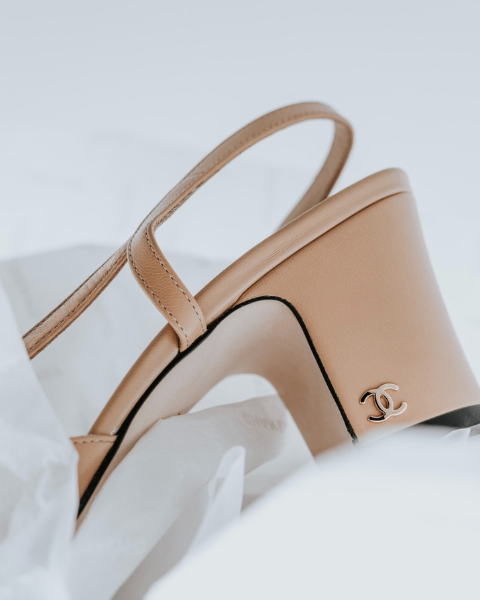“In order To be irreplaceable, one must be different.” – Coco Chanel
Brief Overview:
- French Luxury Fashion House
- Founder: Gabrielle ‘Coco’ Chanel (1883 – 1971)
- Founded: 1910
- Innovations:
- Challenged Traditional Womenswear
- Took Inspiration From Menswear
- Introduced A Sporty, Simple Silhouette
- The first to use cotton jersey in womenswear
- Haute Couture Design House
- Elegance, Simplicity & Liberated Femininity
Coco Chanel Quotes:
- “Fashion is made to become unfashionable.”
- “A woman is closest to being naked when she is well dressed.”
- “Fashion changes, but style endures.”
- “I don’t do fashion. I am fashion.”
- “Dress like you are going to meet your worst enemy today.”
The Rise Of Coco Chanel
Chanel opened her first hat shop in Paris in 1910 on Rue Cambon. She later opened more stores in Deauville and Biarritz. Coco Chanel began making clothes, thus starting her legacy as the iconic fashion designer she is remembered as today. Chanel’s designs became timeless as she produced iconic styles that are still synonymous with the brand.
Her most notable styles are the woman’s tweed suit and her hand in the popularity of the little black dress. Chanel’s vision revolved around comfort and elegance, and she wanted to create designs that were classy but also allowed women to move freely. This innovation made her a pioneer of modern fashion as she was a couturier when corsets were seen as a staple in womenswear. She is famously quoted as saying, “A woman is closest to being naked when she is well dressed.”
By introducing designs inspired by menswear, sportswear and practicality, Chanel rebelled against the constrictive nature of women’s fashion. Chanel was all about feminine elegance, which is why the brand still exudes femininity, grace, luxury and class. She famously said, “Fashion is not something that exists in dresses only. Fashion is in the sky, in the street; fashion has to do with ideas, the way we live, what is happening.”
Chanel died on January 10, 1971. After her death, the brand struggled due to the void left by the death of the beloved style icon. In 1983 (12 years after Chanel’s death), Karl Lagerfeld took over the creative reins of the company to continue Chanel’s legacy of simplicity and sophistication. Upon his death in 2019, Virginie Viard was announced as Chanel’s creative director. She is currently the head of visionary leadership at Chanel. The Wertheimer family holds the Chanel company privately and continues thriving as a brand.
Signature Styles & Iconic Designs
Chanel No. 5
Chanel No. 5 was launched in 1921, the nose behind the scent being Ernest Beaux. It was the world’s first abstract fragrance, incorporating a complex blend of more than 80 ingredients. It was also the first fragrance under a designer’s name.
Chanel’s affection for perfume was no secret; she described perfume as “the unseen, unforgettable, ultimate accessory of fashion…that heralds your arrival and prolongs your departure.”
It is rumoured that the fragrance resulted from a mistake: Beaux’s assistant had added more aldehyde than ever used before. Aldehydes heighten the scents and give the floral notes a delicate nature. Chanel described the scent as “a perfume like nothing else. A woman’s perfume, with the scent of a woman.” Marilyn Monroe also famously said she “five drops of Chanel No. 5″ and nothing else in bed.
Chanel Tweed Suit
The Chanel suit was introduced in 1925 and has stood the test of time, remaining an iconic staple symbol of elegance and opulence for the brand. Chanel, famous for blurring the lines between men and womenswear, debuted the suit’s design consisting of a collarless jacket and well-fitted slim skirt.
At its introduction, tweed – the material synonymous with the house Chanel, was unconventional. Still, alongside the success of the Chanel suit, tweed’s popularity also rose used by other couturiers in Paris, solidifying Chanel as a pioneer of fashion.
When Karl Lagerfeld assumed the creative reins of the brand, he modernised the Chanel suit by incorporating a sense of sensuality which appealed to both younger and mature generations. He ensured that the original DNA was never altered, but today the suit consists of many cuts, trends, materials and designs.
Chanel’s Little Black Dress
Vogue featured a calf-length black dress in 1926 designed by Coco Chanel. The item became an infamous wardrobe staple throughout fashion history: ‘the little black dress’ or nicknamed ‘The LBD.’
Although the LBD is a classic, popular and simple item to own today, Chanel’s introduction of this piece was revolutionary. She took a colour reserved for mourning widows or a ‘uniform’ for working-class women and made it chic.
Vogue editors prophesied that the dress would soon be a “uniform for women of all taste.” They ended up being right, as the little black dress is an official fashion staple. The LBD went from being a tool to segregate certain classes in society to being adopted as haute couture for women of taste.
Chanel Biographies
Movies
- Chanel Solitaire, 1981
- Coco Chanel, 2008
- Coco Chanel & Igor Stravinsky, 2009
- Coco Before Chanel, 2008
Books
- Coco Chanel: The Legend and the Life – Justine Picardie
- Gospel According to Coco Chanel: Life Lessons From The World’s Most Elegant Woman – Karen Karbo
- Mademoiselle Chanel – C.W. Gortner
Musical
- Coco, 1969






[…] has alway been showcased in fashion shows of notoriously luxurious brands; think of the luxe that Chanel’s tweed, Hermes Birkin and YSL tailoring has always […]